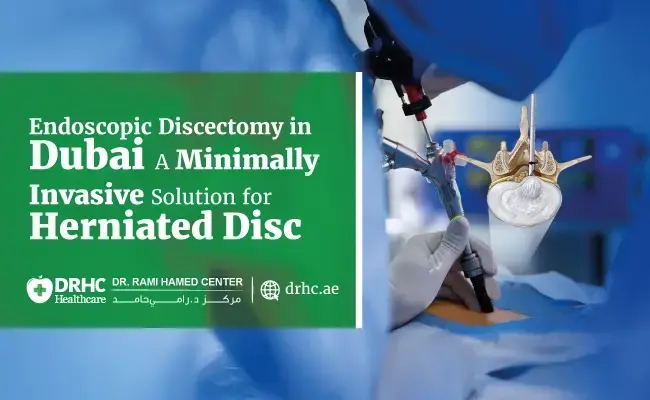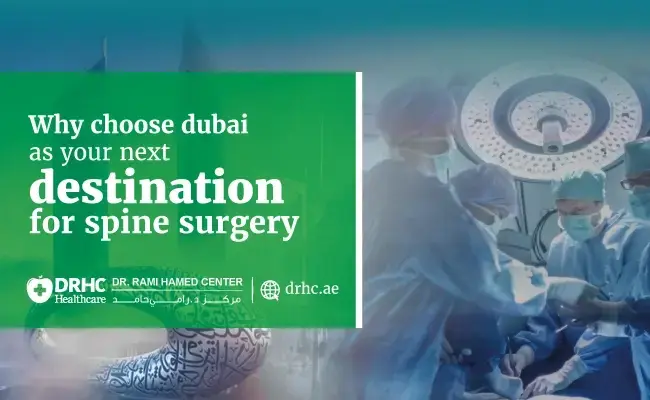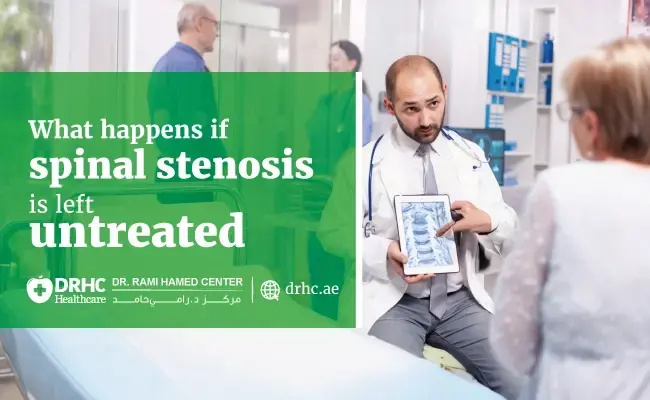
As a spine surgeon with over 30 years of experience and more than 4,000 spine surgeries performed in Dubai, one of the most common questions I get is:
“Why do you prefer the anterior approach to cervical spine surgery over the posterior approach?”
The short answer: Anterior Cervical Surgery — particularly Anterior Cervical Discectomy and Fusion (ACDF) or Artificial Disc Replacement (ADR) — provides more direct access, less muscle disruption, faster recovery, and better long-term outcomes for most cervical spine conditions.
Let me explain why this approach has become my standard for the majority of cervical disc herniation, foraminal stenosis, radiculopathy, and myelopathy cases
Understanding the Surgical Choice
When treating cervical spine problems like:
The choice of surgical approach significantly impacts patient outcomes. Here’s a direct comparison:
Anterior vs. Posterior Cervical Spine Surgery
| Factor | Anterior Cervical Approach (ACDF / ADR) | Posterior Cervical Approach |
|---|---|---|
| Access to Pathology | Direct access to remove herniated discs and osteophytes | Indirect; must go around the spinal cord |
| Muscle Disruption | Minimal — dissects through natural tissue planes | Significant — involves muscle stripping |
| Post-Operative Neck Pain | Typically less | Higher risk of chronic axial neck pain |
| Restoring Cervical Lordosis | Yes — via cage or artificial disc implantation | Limited or not possible |
| Ideal for Kyphotic Spine? | ||
| Multilevel Decompression | Safe and stable with fusion or ADR | Higher risk of instability without fusion |
| Cosmetic Incision | Small transverse cut along neck crease (less visible) | Midline incision at the back of the neck (more visible) |
| Recovery & Return to Work | Faster — due to less tissue trauma Slower | Slower - longer healing due to muscle disruption |
Why I Prefer the Anterior Approach
1. Direct Access to the Pathology
Most cervical disc herniations and osteophytes are located anterior to the spinal cord. The anterior approach allows me to
- Directly visualize and decompress the disc space
- Remove disc fragments and bone spurs completely
- Restore disc height and foraminal diameter
Posterior surgery requires working around the spinal cord to reach the anterior pathology — which is less precise and carries more risk.
2. Less Muscle Disruption and Post-Op Pain
Anterior surgery avoids cutting through or stripping the large posterior cervical muscles (trapezius, splenius capitis, semispinalis, and multifidus). This leads to:
- Less postoperative neck pain
- Faster recovery
- Better long-term strength and mobility
Posterior surgery, on the other hand, often results in more pain and longer recovery due to muscle trauma.
3. Superior Biomechanical Reconstruction
Using ACDF or ADR, I can:
- Restore natural cervical lordosis
- Stabilize unstable segments
- Use implants (cages, plates, or artificial discs) to maintain alignment
This is especially important in multilevel disease or kyphotic deformity, where posterior decompression alone won't correct the underlying structural issue.
4. Lower Risk of Scar Tissue and Nerve Retethering
Posterior approaches like foraminotomy may relieve symptoms temporarily but don’t always remove the source of compression. Additionally:
- Scar tissue from posterior surgery can re-tether the nerve
- Anterior decompression removes the pathology at its source
This makes the anterior approach a more durable, long-term solution — particularly for younger patients, athletes, or those with recurrent symptoms.
Our Related Blogs:
- Is endoscopic discectomy painful?
- What is the recovery time for endoscopic spinal discectomy surgery?
- What is the Success Rate of Endoscopic Discectomy?
- How risky is endoscopic discectomy?
- Can I have a normal life after a discectomy?
- What should I avoid after a discectomy?
- 300 Full Endoscopic Discectomies Later: A Milestone in Motion
When Do I Choose Posterior Surgery?
Although I favor the anterior route, there are cases where posterior surgery is more appropriate, such as:
- Multilevel congenital spinal stenosis
- Posterior ligament hypertrophy (e.g., ligamentum flavum, OPLL)
- Revision cases where anterior surgery was previously performed
- When avoiding anterior neck scarring is preferred
In these situations, I perform laminoplasty, posterior foraminotomy, or laminectomy with fusion, depending on the patient’s condition and goals.
Real Patient Benefits I’ve Observed
- Fast relief of neck, shoulder, and arm pain
- Return to normal activity or work in 2–4 weeks
- Minimal scarring (small incision in the neck crease)
- Reduced need for post-operative pain medication
- High satisfaction and frequent word-of-mouth referrals
Our Approach at DRHC Dubai
At Dr. Rami Hamed Center (DRHC) in Dubai Healthcare City, we take a comprehensive approach:
- Advanced imaging and diagnostics
- Intraoperative neuromonitoring for nerve safety
- Individualized surgical plans (ACDF, ADR, or posterior techniques)
- State-of-the-art equipment and surgical precision
Whether it's a single-level herniation or a complex multilevel deformity, every procedure is planned to maximize safety, function, and long-term relief.
Final Thoughts
“Anterior cervical surgery offers what every spine surgeon strives for: complete decompression, minimal disruption, and a stable spine. That’s why it remains my approach of choice — and why I see patients thriving after it, every week.”
If you're experiencing neck pain arm numbness, or weakness due to a cervical disc problem, I invite you to book a consultation. I’ll review your MRI, explain your options, and help you decide the best path to recovery.
Dr. Rami Hamed
Consultant Spine & Orthopedic Surgeon
Founder, DRHC – Dubai Healthcare City
📞 +971 4 279 8800
🌐 www.drhc.ae
📍 Dubai Healthcare City, Building 52
Topic: orthopedic Endoscopic Discectomy




.jpg)




Leave a comment